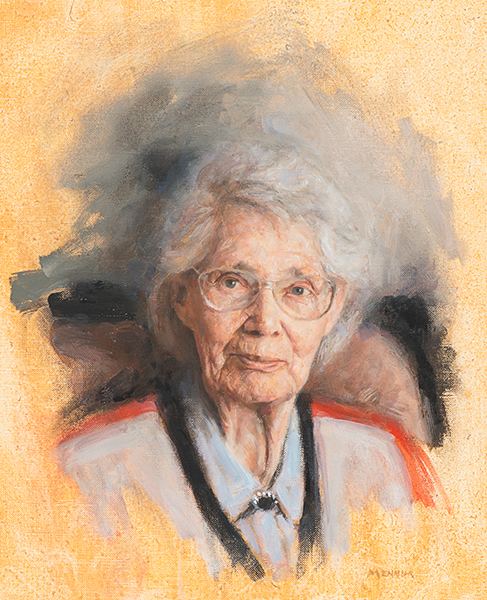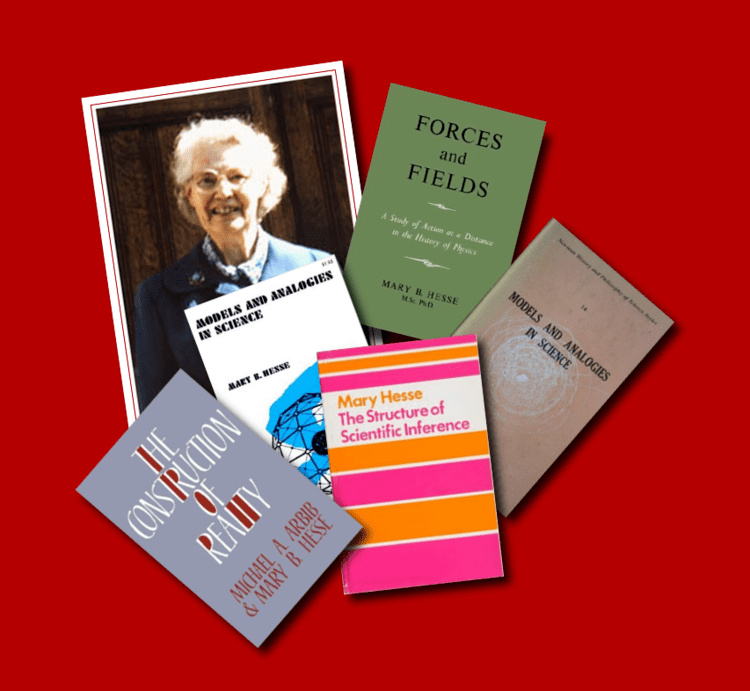Name Mary Hesse | Role Philosopher | |
 | ||
Books Models and analogies in science | ||
Mary Brenda Hesse (15 October 1924 – 2 October 2016) was an English philosopher of science and Professor Emeritus of Philosophy of Science at the University of Cambridge, known for her work on the relevance of analogies and models in science. Her book Models and Analogies in Science (1963/66) is considered a seminal work in the field and among the most influential works of the 20th century in her field.
Contents

Biography

Born in Reigate in Surrey, England, Hesse studied at the Imperial College London, where she received her doctorate in 1948. She further acquired a Master of Science in 1949 from University College London.

After graduation Hesse started her academic career as lecturer in Mathematics at the University of Leeds. From 1955 to 1959 she taught Philosophy of Science and History at the University of London. In 1960 she joined Wolfson College, Cambridge, where from 1975 to her retirement in the 1990s she was Philosopher of Philosophy of Science. Among her PhD students was Paul Cilliers (PhD, 1994).

Over the years Hesse was Visiting Professor at several Universities in Europe and the United States. She was elected a Fellow of the British Academy and in 1979 chosen as president of the Philosophy of Science Association. (SA)
Work
Hesse's work has focussed on the philosophical interpretation of logic and scientific methods, as well as to the principles of the natural and social sciences. She suggested a scientific methodology based on an analogical modelling approach. She distinguishes those models in formal and material, as well as positive, negative and neutral analog properties.
Models and Analogies in Science
Her publication Models and Analogies in Science is a widely cited and accessible introduction to the topic. Hesse argues, contra Duhem, that models and analogies are integral to understanding scientific practice in general and scientific advancement in particular, especially how the domain of a scientific theory is extended and how theories generate genuinely novel predictions. Examples of such models include the famous billiard ball model of the dynamical theory of gases and models of light based on analogies to sound and water waves.
Hesse thought that, in order help us understand a new system or phenomenon, we will often create an analogical model that compares this new system or phenomenon with a more familiar system or phenomenon. In her book, Hesse makes a distinction between three types of analogues in scientific models:
Positive analogies are those features which are known or thought to be shared by both systems, negative analogies are those features which are known or thought to be present in one system but absent in the other, and neutral analogies are those features whose status as positive or negative analogies is uncertain at present.
Neutral analogies are by far the most interesting of the three types of analogies, for they suggest ways to test the limits of our models, guiding the way for scientific advancement. In the late 19th century, for example, the idea that light-waves have a physical medium called the luminiferous ether would have been best thought of as a neutral analogy with water and sound waves. Eventually, due to a null result in the Michelson–Morley and Trouton–Noble experiments, as well as other similar experiments, this analogy came to be accepted as a negative analogy - we now accept that light has no physical medium, unlike sound and water waves. The discovery of this negative analogy led to further advances, including the unification of electromagnetic theory with optics, and the eventual creation of new and more informative models of light.
Publications
Books, a selection:
